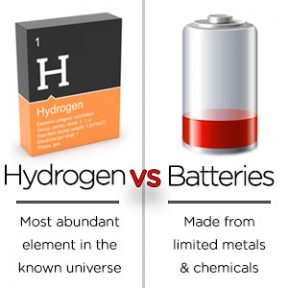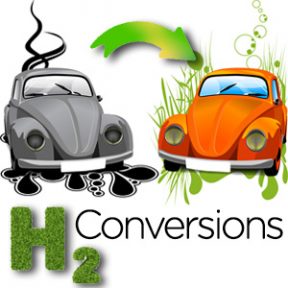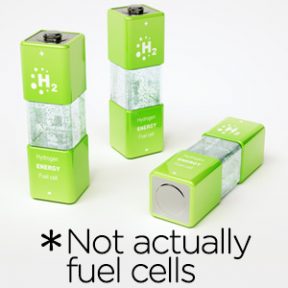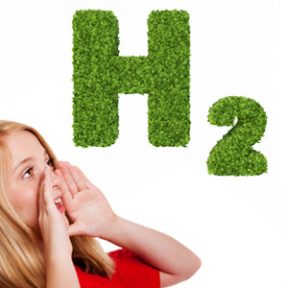 I’ve written before about the huge, ongoing problem of depression (hint: pickles can help!).
I’ve written before about the huge, ongoing problem of depression (hint: pickles can help!).
There’s been some very interesting research over the past decade that SEEMS to indicate that an existing drug called ketamine might be both highly effective and much cheaper than the current crop of very expensive medications.
Ketamine has been around for over 40 years, and it’s technically an anaesthetic. A recent National Institute of Health study noted “Interestingly, ketamine has demonstrated the potential ability to rapidly reduce suicidal ideation in controlled and open-label studies (including emergency room settings).”
Here’s some science: National Institute of Health
Here’s some not-science: NPR
 I’ve written before about the huge, ongoing problem of depression (hint: pickles can help!).
I’ve written before about the huge, ongoing problem of depression (hint: pickles can help!).
There’s been some very interesting research over the past decade that SEEMS to indicate that an existing drug called ketamine might be both highly effective and much cheaper than the current crop of very expensive medications.
Ketamine has been around for over 40 years, and it’s technically an anaesthetic. A recent National Institute of Health study noted “Interestingly, ketamine has demonstrated the potential ability to rapidly reduce suicidal ideation in controlled and open-label studies (including emergency room settings).”
Here’s some science: National Institute of Health
Here’s some not-science: NPR
 If your kid is getting ready to take the ACT or SAT, here are some tips that will help them perform at an optimal level.
If your kid is getting ready to take the ACT or SAT, here are some tips that will help them perform at an optimal level.
FRIDAY NIGHT
1. Cancel social activities until after the SAT/ACT; Trust me it’s worth it…
2. Review your SAT/ACT workbooks and go over incorrect answers so you
remember why you missed the problems.
3. Review your notes and flashcards. Turn off TV, radio, IM, video games (anything distracting).
4. If you’re listening to audio SAT/ACT vocab/language tapes, listen to the tapes again.
5. Pack your backpack with the following items: driver’s license or student ID, #2 pencils with good erasers, digital watch*, calculator* with fresh batteries (if needed), SAT/ACT workbook, SAT/ACT flashcards, tissues, glasses or extra contact lenses, low‐fat snack (high protein/low sugar, apple), bottled water.
* Note that you will NOT be able to use your phone as a clock or calculator during the test.
6. Go to bed at a reasonable hour ‐‐ like 10 or 11 pm.
SATURDAY MORNING
1. Get up 1.5‐2 hours before the SAT/ACT. Keep all media off (TV, radio, internet)
2. Work out until you break a sweat ‐‐ get your cardiovascular system pumping to feed your brain!
3. Take a shower and dress in something comfortable (this is NOT a fashion show!).
4. Eat a low‐fat, low‐carb breakfast (egg burritos are good). No bacon or sweet cereal.
5. Review SAT/ACT workbook and flashcards during breakfast, on the way to the test center, and before the SAT/ACT begins.
6. Take your backpack; double check to make sure you have everything you need.
7. Arrive at the test center early to check in. Use the restroom; empty your bladder and bowels.
8. Go to the test room and try to sit in the front row to remove potential distractions; don’t sit near friends.
9. Review SAT/ACT workbook and flashcards until the proctor tells you to put away your things.
10. BREATHE! You’ve created the optimum environment to take this test. Pace yourself; don’t spend too much time on any one problem.
11. If you bomb the test for whatever reason, cancel the test by giving it to the proctor. Then, get tutoring support and retake it!
Good luck!
 Hint: Get them involved!
Hint: Get them involved!
Are you tired of making lunches that just end up in the trash at the end of the day? Do you feel like a burnt out mind reader because their response to “What do you want for lunch?” is “I dunno…”. My girls would go through phases where they loved tuna sandwiches or bagels and cream cheese, and that’s all they would eat. Then, all of a sudden, they hated it! When I tried introducing new things or giving them their favorite dinners (as leftovers the next day), it all came home after school. ARGH!
Why is it so difficult to pack a simple lunch?
Then one day, I just had enough. Rather than rack my brains and waste money on tons of food that they threw out, I turned the tables on them!
Here’s what I did: I created a lunch menu for every day of the week: Monday through Friday. Then I asked them to fill in exactly what they wanted for lunch each day AND they had to make a list of all of the ingredients needed to make all of their lunches on our family grocery list that I posted on the fridge.
Now THEY had to think about what they wanted to eat for lunch. What happened next was nothing short of a miracle. They actually got creative and thought about those incredible lunches that their friends’ mothers made for them. As long as they didn’t include candy or sodas, I gave them free reign to choose their lunches. Jaclyn ordered fruit rollups, Fuji apples, and bagels with lox and cream cheese. Nicole loved roast beef sandwiches with tomatoes on the side or open-faced tuna sandwiches and Clausen dill pickles. As they got older, their lunches included yogurt with cottage cheese or granola, carrot sticks with Ranch dressing, and exotic fruit like kiwi, mangos, and pineapples. I was happy to buy everything on their lists; no complaints on this side!
By making them choose their lunches and order all the ingredients, they owned their meals. If they were hungry at the end of the day, they simply added more food to their lunch boxes the next day. No longer did they throw out entire lunches and they seemed to enjoy them more. By the way, they started making their own lunches without me even telling them to because they knew what was in the fridge and they wanted to be sure they got what they had ordered (from the grocery store).
I hope this helps as you begin a new school year with your kids!
 I must admit that when I first heard about hydrogen fuel cells, the first thought that came to mind was the Hindenburg. Images of the flagship bursting into flames and crashing to the ground were quite unsettling. Then, of course, there’s the hydrogen bomb — which ranks right up there with the atomic bomb in everyone’s minds.
I must admit that when I first heard about hydrogen fuel cells, the first thought that came to mind was the Hindenburg. Images of the flagship bursting into flames and crashing to the ground were quite unsettling. Then, of course, there’s the hydrogen bomb — which ranks right up there with the atomic bomb in everyone’s minds.
But, hydrogen is just as safe as gasoline, or even safer.
First, let’s dispel misinformation. The Hindenburg disaster was not the result of a hydrogen fire. In 1998, Nicole, my eldest daughter, met with Dr. Addison Bain in Washington DC where he shared with her his discovery that the Hindenburg caught on fire for two reasons: it began with the decision to change the envelop doping process (they used flammable paint) and ended with the decision to change the final landing procedure. Read Bain’s book, Hindenburg: Exploring the Truth, to learn more about what really happened.
Let’s compare apples to apples:
If you spilled one gallon of gasoline and dropped a match on it, you would have a huge flame. But, if you leaked one gallon of gaseous hydrogen, it wouldn’t pool on the ground like gasoline, instead, it would shoot straight up into the atmosphere at about 45 miles per hour because it is lighter than air. If you tried to light it with a match, the hydrogen would long be gone before you could ignite it.
Hydrogen tanks are designed so that in the event of an accident, the tank would leak hydrogen and it would simply go up into the air. Hydrogen explodes when it is compressed in an airtight container. Honestly, I would feel much safer driving with a tank of hydrogen in my trunk than a tank of gasoline.
 There seems to be a lot of confusion about the difference between electric-powered battery cars and hydrogen-powered fuel cell cars. It’s really quite simple!
There seems to be a lot of confusion about the difference between electric-powered battery cars and hydrogen-powered fuel cell cars. It’s really quite simple!
Both cars are ELECTRIC; which means they have a motor, not an internal combustion engine. The only difference is that electric cars store their energy in batteries, and fuel cell cars store their energy in gaseous hydrogen.
Elon Musk of Tesla has been making a lot of noise about the superiority of batteries over hydrogen. Not sure why he is trying to create a divide in these clean alternative energy storage systems, when he should be joining forces with the hydrogen innovators. Shouldn’t the “bad guy” be the oil companies?
It’s curious to me that Musk prefers batteries when, if all things were equal (motors, car bodies, tires), batteries lose substantial charge over time while hydrogen will never lose any potential energy. You know that batteries die off in just a few days, but hydrogen stays constant forever.
What’s worse is that at the end of the battery’s life, it needs to be taken to hazardous materials sites because it contains dangerous chemicals and rare earth or highly toxic metals like cadmium, lithium or lead. Hydrogen, on the other hand, simply combines with oxygen to make electricity and the only by-product is pure water.
Electric cars that run on batteries have a prohibitively short range — around 40 to 100 miles per charge. Fuel cell cars, on the other hand, have an average range of 300 miles per tank. Charging batteries takes anywhere from 4-20 hours (depending on the battery and the power source), while filling a hydrogen tank only takes about 3 minutes.
This isn’t a battery vs hydrogen battle. Hydrogen fuel cell cars use a few small batteries to power accessory devices. I just find it aggravating to see so much misinformation being put out there about hydrogen when we should be doing everything possible to stop using petroleum and natural gas.
 With over one billion internal combustion engine (ICE) vehicles on the road — and spewing CO2 into the atmosphere — today, the most efficient way to reverse this is to convert ICE cars to use gaseous hydrogen.
With over one billion internal combustion engine (ICE) vehicles on the road — and spewing CO2 into the atmosphere — today, the most efficient way to reverse this is to convert ICE cars to use gaseous hydrogen.
The team members at Kids 4 Hydrogen are actively finding safe ways to do these conversions. Because it’s not practical to junk all of these cars, we really do need to convert them in order to have any positive effect on our atmosphere.
Simple, right?
Yes and no. Yes, there’s only one way to deal with the one billion cars on earth. We need to change the energy they use to something that has zero emissions. Yup. ZERO EMISSIONS.
Well, we all know gasoline is NOT THE ANSWER. It’s too expensive to remove an ICE and replace it with an electric motor. So, the only viable way to continue to utilize the one billion ICE cars is to convert them to use gaseous hydrogen. That would mean that all billion cars on the roads today would spew ZERO EMISSIONS.
So what about the NO? No because the oil companies don’t want us to convert our ICE cars. That would mean that we wouldn’t be buying gasoline at the corporate gasoline stations around the world. Which would in turn mean that they wouldn’t continue to enjoy the billions of dollars of profit they make each year on gasoline sales. These oil companies are so powerful that they have a stranglehold on car manufacturers and our government officials are in their pockets. So it’s not going to be easy LOGISTICALLY or POLITICALLY to convert our cars to using gaseous hydrogen.
Several scientists and innovators have successfully converted ICE cars in the past. It’s not a difficult process. They’re testing storage tanks to find the most efficient way to store hydrogen in existing cars. I am so excited about this that I am donating my own car to the project.
I can’t wait to drive my own hydrogen-powered ICE car!
 In a nutshell, a fuel cell is a device that takes gaseous hydrogen and converts it into electricity. This electricity can then be used to power anything that is normally powered by electricity, like cars with electric motors, ice cream makers, etc.
In a nutshell, a fuel cell is a device that takes gaseous hydrogen and converts it into electricity. This electricity can then be used to power anything that is normally powered by electricity, like cars with electric motors, ice cream makers, etc.
Watch the excellent one-minute video at the bottom of this post to learn how a fuel cell works.
In 1998, my eldest daughter Nicole and several of her 8th grade classmates received a Dept of Energy (DOE) grant to build a hydrogen fuel cell.
They contracted Schatz Energy Lab at Humboldt State University to design and build the 15-cell fuel cell for Merit Academy.
The students gave fuel cell demonstrations at universities and conventions in 1999 and then Nicole continued to promote hydrogen fuel cells for the next 4 years:

 I just test drove a Toyota Mirai — the first hydrogen fuel cell car to be sold in the United States! It has an electric motor but is powered by gaseous hydrogen instead of batteries.
I just test drove a Toyota Mirai — the first hydrogen fuel cell car to be sold in the United States! It has an electric motor but is powered by gaseous hydrogen instead of batteries.
Wondering what hydrogen power is?
Listen to what the kids say about why we should drop oil and embrace hydrogen!
Back in 1998, my eldest daughter Nicole built a fuel cell with her classmates at Merit Academy. They were fed up with the Gulf War (and that was just the start of wars over oil) and after a class debate, they launched a campaign to educate the public about clean alternative energy sources like solar hydrogen. Nicole and her friend Joanne became the first middle school students to ever build a hydrogen fuel cell.
Nicole continued to do educational outreach throughout high school and gave demonstrations at the Hart Senate Building before Congress in Washington DC and across America at conventions and college/high school campuses.
Intrigued by alternative energy possibilities, my youngest daughter Jaclyn invited energy experts for a forum at Merit Academy. She explored alcohol fuel, biomass, and other alternatives but came back to hydrogen as the cleanest and most promising energy solution. Jaclyn started Kids 4 Hydrogen in 2004 and focused on converting internal combustion engine (ICE) cars to use gaseous hydrogen. Getting resistance from the Dept of Energy, auto manufacturers, and oil companies only fueled her passion for converting the 320 million cars on the road in the United States.
In 2012, Michael Beck took the helm at Kids 4 Hydrogen. He researched the revitalization of hydrogen as an energy source and led the team on a 10-Day tour with a Mercedes F-Cell through California.
In 2013, Lexie Lyons created a whiteboard video that best describes why hydrogen is going to be a vital part of our energy future. Although this Indiegogo campaign is over, the message still resonates:
In 2013, the Kids 4 Hydrogen team wrote “In the Year 2050” — a song based on the Zager and Evans’s 1969 number one hit “In the Year 2525.” Vocals by Nicole D’Arcy, lyrics by Rebecca Fang, instrumentals by Daniel Kodama and Nicole D’Arcy, and music video by Zohar Wouk.
 Before heading back to campus, protect yourself by understanding your responsibility with affirmative consent!
Before heading back to campus, protect yourself by understanding your responsibility with affirmative consent!
AFFIRMATIVE CONSENT is a knowing, voluntary and mutual decision among all participants to engage in sexual activity. That means everywhere, including on college campuses. And, if a student is really drunk, she cannot give her consent to sex because she is incapacitated. This is a new law that went into effect in early 2015 in California and New York, and affirmative consent bills have been introduced in New Jersey, New Hampshire, and Connecticut.
The good news is that even if consent to engage in sex is given initially, the woman has the right to decide when she would like to stop. “Yes means yes” means that sex can advance until you hear “no.” Silence or lack of physical resistance does not demonstrate consent.
Hello! Is everyone paying attention here?
So if you’re a guy, it’s probably a good idea to make sure your partner would like to continue at different stages of sexual activity. Ask, “Do you want to do this? Is this okay?” to be sure you’re not misreading your partner’s intent. A good way to think of it is like borrowing a friend’s car. You don’t just take someone else’s car, right? You would ask permission first and then take the car after they confirmed their assent by handing you the keys.
Don’t rely on nonverbal cues. Just because your partner appears to be enjoying the sexual activity or is wearing sexy clothing does not mean that you have permission to move to the next level of intimacy. You still need to get verbal permission to have sex in order to protect yourself. In other words, if you take the car without getting the keys first, you’ve committed a crime. Capiche?
[Source]
 I read the article “Why you shouldn’t tell children they can be whatever they want” with trepidation.
I read the article “Why you shouldn’t tell children they can be whatever they want” with trepidation.
Tim Lott suggests that instead of telling children they are special and can be superstars, we should emphasize self-control and hard work.
Frankly, I don’t see why we can’t do both. I believe that we should encourage kids to reach for the stars AND that they’ll have to work really hard to get there.
Lott’s mentality kind of reminds me of the helicopter parents who stop children mid-game in order to spare them the feelings of defeat, should they lose.
Just because all children don’t become astronauts doesn’t mean that they will grow up feeling like failures.
Whatever happened to the “If you don’t shoot, you won’t score” philosophy?










